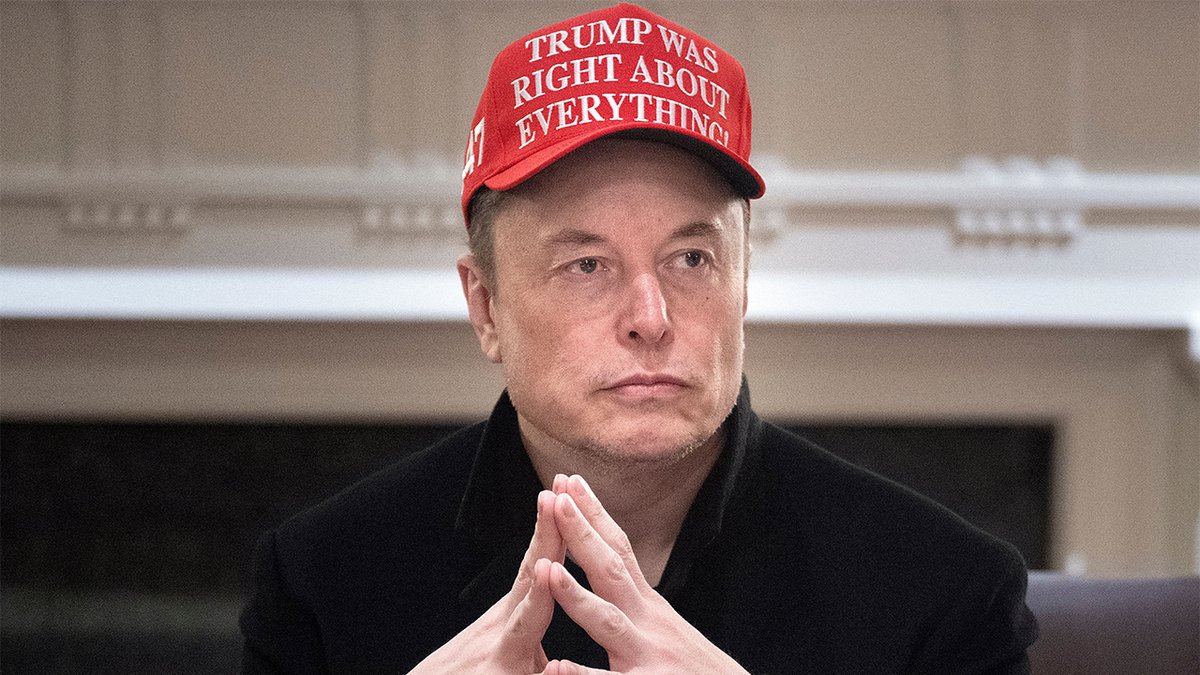NEWNow you can take heed to Fox Information articles!
Allow us to be trustworthy: When most individuals hear “tariffs,” they give thought to worth hikes and commerce wars. However the Trump administration’s newest tariff rollout just isn’t merely a knee-jerk protectionist transfer—it’s a part of a far broader technique.
What is definitely in play here’s a high-stakes effort to construct up leverage and sources to handle America’s debt, reset its industrial base, and renegotiate its standing within the international order.
HOW WE GOT TO LIBERATION DAY: A LOOK AT TRUMP’S PAST COMMENTS ON TARIFFS
And all of it begins with an issue most individuals haven’t been advised sufficient about.
In 2025, the U.S. authorities should refinance $9.2 trillion in maturing debt. Some $6.5 trillion of that comes due by June. That isn’t a typo—that could be a debt wall the dimensions of a small continent.
Now, right here is the mathematics: In response to Treasury Secretary Scott Bessent, every basis-point (one one-hundredth of a p.c) drop in rates of interest saves the federal government roughly $1 billion per yr. For the reason that announcement of tariffs on April 2, 10-year Treasury yields have fallen from 4.2 p.c to three.9 p.c—a 30 foundation level drop. If that holds, it interprets to $30 billion in financial savings.
US President Donald Trump holds a chart as he delivers remarks on reciprocal tariffs throughout an occasion within the Rose Backyard entitled “Make America Rich Once more” on the White Home in Washington, DC, on April 2, 2025. (Picture by BRENDAN SMIALOWSKI/AFP by way of Getty Photographs)
(Getty Photographs)
So, maintaining yields low is not only sound coverage—it’s a fiscal necessity.
However we’re in a tough atmosphere. Inflation has not totally cooled, and the Federal Reserve stays cautious of reducing charges too rapidly. So the query turns into: How does one convey yields down with out the Fed’s assist?
Right here is the place the technique turns into fascinating.
By introducing sweeping tariffs, the administration is creating exactly the sort of financial uncertainty that drives buyers towards safer property similar to long-term U.S. Treasuries. When markets are spooked, capital exits danger and fairness property (as we see with the inventory market collapse) and piles into protected property, primarily the 10-year U.S. treasury bond. That demand pushes yields decrease.
It’s a counter-intuitive transfer, however a calculated one. Some have referred to as it a “detox” for the overheated monetary system. And it seems to be working.
Nevertheless, even cheaper debt doesn’t remedy every thing. The deficit stays large—and that’s the place spending cuts are available.

Elon Musk’s DOGE has promised $1 trillion in cuts to the deficit. (BRENDAN SMIALOWSKI/AFP by way of Getty Photographs)
Backed by the Division of Authorities Effectivity (DOGE) and Elon Musk, the administration is reportedly focusing on $4 billion in day by day spending cuts. If their suggestions translate to cuts and get ratified by Congress, that would quantity to a trillion {dollars} off the deficit by late 2025.
At this level, now we have two pillars: decrease borrowing prices and tighter spending. However there stays a 3rd—and arguably most vital—pillar: development.
Tariffs function the ignition swap. By making imports dearer, they create area for American producers to step again in. The target is to not punish commerce companions—it’s to make home business viable once more, even when solely lengthy sufficient to rebuild vital capability.
Sure, costs will rise. However the administration is totally conscious of that. In reality, it’s front-loading the ache now, hoping to ship seen job development and manufacturing unit exercise earlier than the November 2026 midterm elections.
Within the meantime, tariffs themselves will generate income—an estimated $700 billion or extra within the first yr. That creates extra fiscal room for the administration to allow tax cuts and preserve spending on Social Safety, Medicaid and different packages.
The place the image turns into much more fascinating is on the geopolitical entrance.
These tariffs don’t exist in a vacuum. They’re being deployed alongside a deliberate reshaping of worldwide alliances. The U.S. is quietly distancing itself from NATO, recalibrating ties with Europe, and opening beforehand frozen diplomatic channels with the Gulf nations and Russia.
Why? As a result of the post-Chilly Warfare commerce order now not serves U.S. pursuits. It enabled deficits, offshoring, and strategic dependency. Now, tariffs turn out to be leverage. Allies who align with U.S. priorities obtain reduction; others face larger prices.
China, naturally, is the central participant. For years, economists have argued that its artificially weak foreign money and industrial overcapacity have distorted international commerce. Tariffs are one approach to pressure a reckoning—and probably, a revaluation of the yuan.
Different nations won’t be spared. Europe could possibly be requested for phrases on Ukraine. India could also be pressured for deep tariff cuts. Canada and Mexico will probably face calls for associated to fentanyl and border enforcement.
CLICK HERE FOR MORE FOX NEWS OPINION
This isn’t random. It’s commerce coverage as a method to pressure nations to the negotiating desk.
Domestically, the political logic is equally clear. The sectors most probably to learn—metal, cars, textiles—are concentrated in battleground states. The administration is betting that seen wins in these areas will outweigh short-term ache in sectors depending on low-cost imports.
CLICK HERE TO GET THE FOX NEWS APP
There are critical dangers right here. If inflation returns or if the reshoring guess fails, the blowback could possibly be extreme. However make no mistake: This isn’t improvisation. It’s disruption by design.
Whether or not one agrees with it or not, this is without doubt one of the most bold fiscal and industrial resets in a era.
The one query that continues to be is—will it work?

